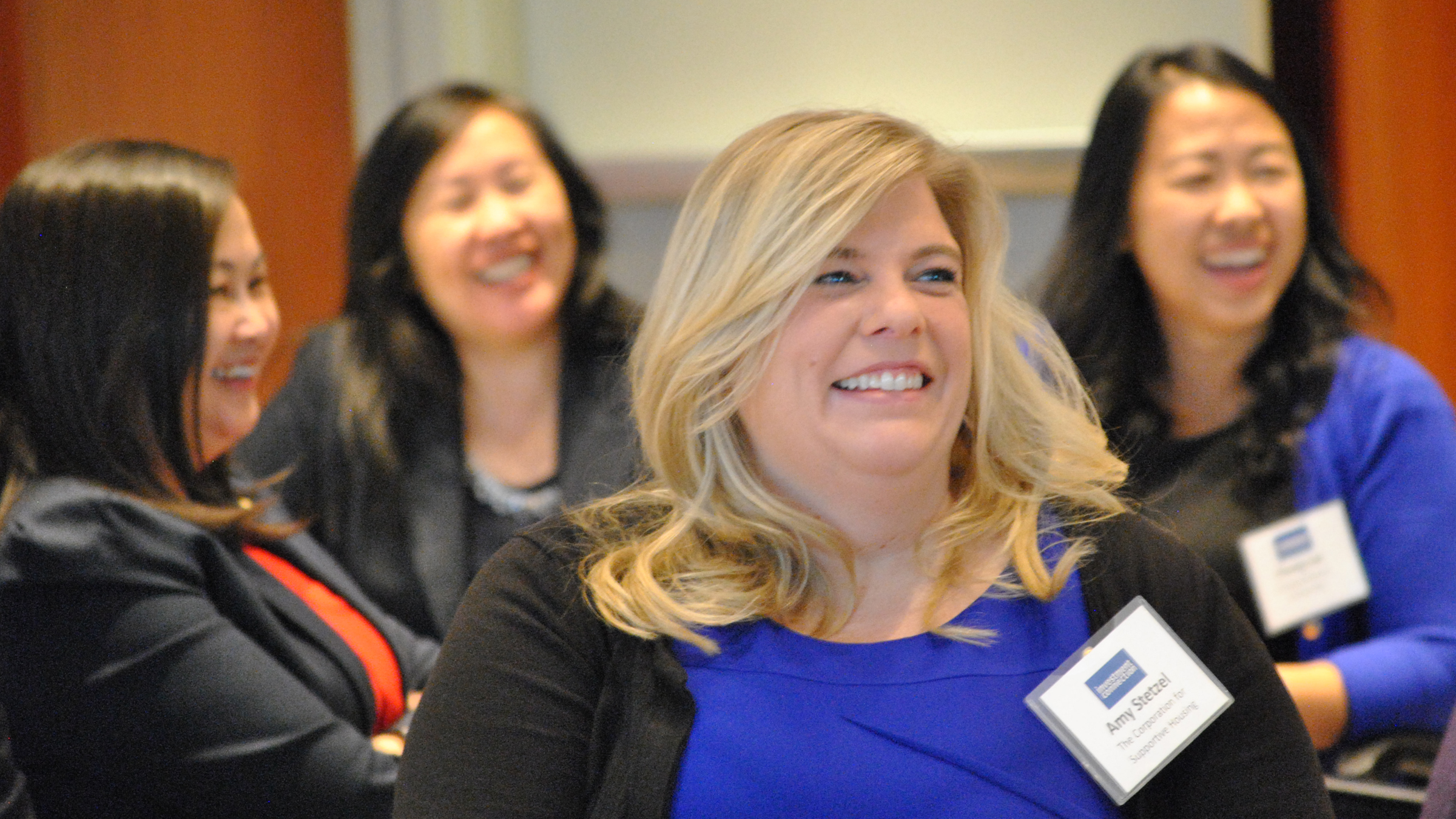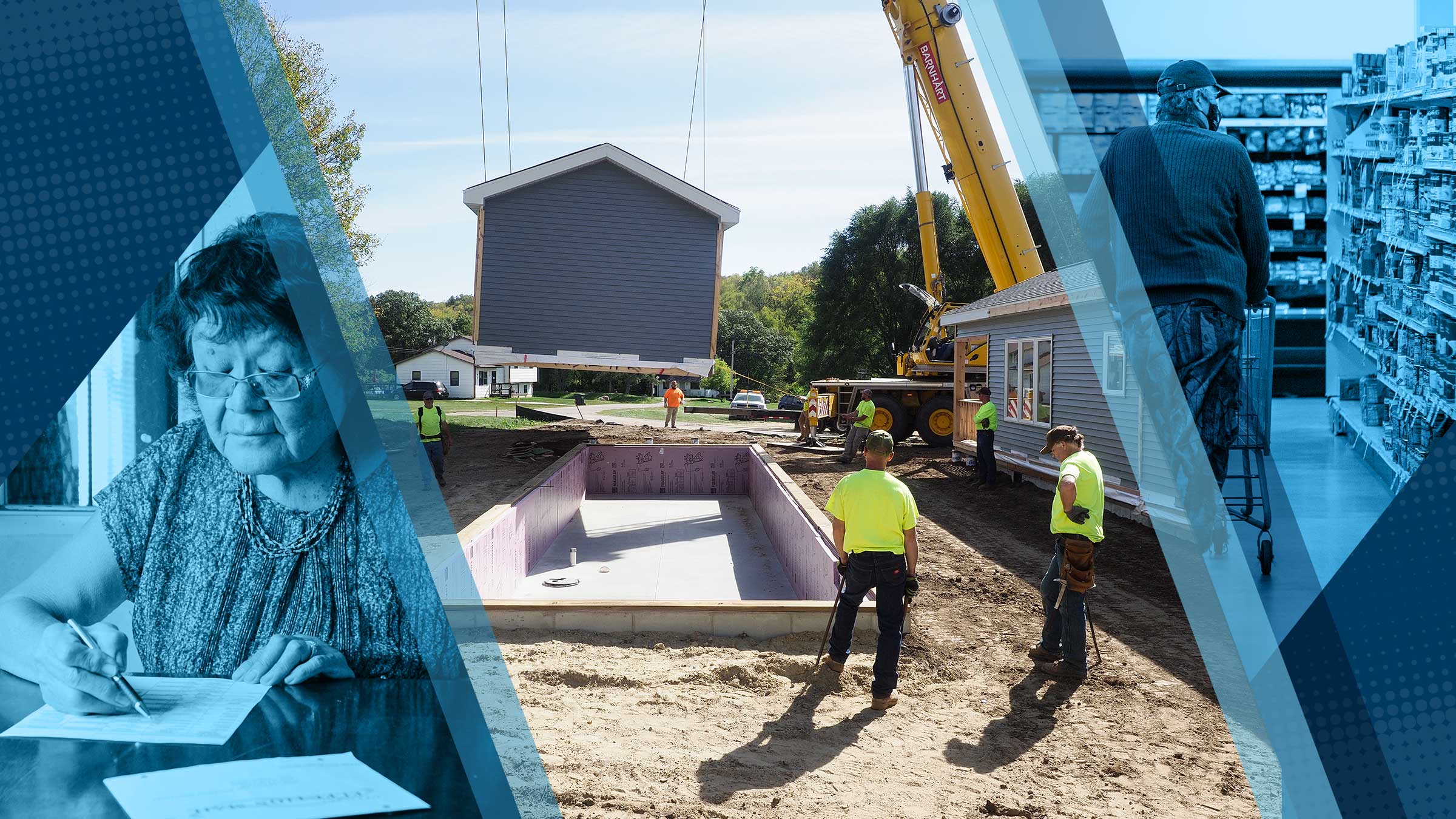One focus of the community development work at the Federal Reserve Bank of Minneapolis is to expand knowledge and utilization of the Community Reinvestment Act (CRA), a landmark federal law enacted in 1977. The CRA encourages depository institutions to help meet the credit needs of the communities in which they operate, including low- and moderate-income (LMI) neighborhoods, consistent with safe and sound banking operations. Under the CRA, banks and other depository institutions can receive favorable regulatory consideration for providing loans, investments, and services to LMI neighborhoods. Banks often conduct these activities directly through, or in cooperation with, community-based organizations that serve the geographic areas in which the banks operate. The CRA is therefore at the heart of many partnerships between financial institutions and community development organizations.
To help banks and community organizations find and work with one another, the Minneapolis Fed hosts Investment Connection, an ongoing series of “matchmaking” events. At each Investment Connection session, multiple community organizations in need of investments, grants, or loans pitch their potentially CRA-eligible proposals to an audience of banks and other potential funders. The fast-paced format, which was pioneered by the Federal Reserve Bank of Kansas City, is intended to expose banks to investment and partnership opportunities that can be beneficial for both sides.
What sorts of connections are being made at Investment Connection, and are they leading to positive outcomes? To explore those questions, we spoke to representatives of Tradition Capital Bank and TCF National Bank, two financial institutions that participated in Investment Connection events held at the Minneapolis Fed in 2018. The sessions provided a platform for the two banks to learn about CRA-eligible projects in the Twin Cities. They made contact with a number of the participating community organizations and have each financially supported one of them to date. TCF made an equity equivalent investment (EQ2) in Metropolitan Consortium of Community Developers (MCCD), a Minneapolis-based nonprofit.* Tradition Capital Bank provided liquidity to Neighborhood Development Center (NDC), a St. Paul-based nonprofit, through a direct purchase of selected NDC small business loans. Both MCCD and NDC are community development financial institutions, or CDFIs—specialized entities that provide financial products and services in markets not fully served by traditional financial institutions. (For more on CDFIs, see the sidebar below.)
During our conversations with the banks’ representatives, they discussed how they identified and evaluated the two nonprofit organizations’ proposals and how Investment Connection could help other banks find organizations with potentially CRA-eligible projects that align with their banking strategy. The following is an edited transcript of conversations that took place in March 2020 with Bill Sarvela, senior vice president and regional CRA officer of TCF Bank; and CEO Dan Fagan and Keystone Giving Program Manager Lauren Withers of Tradition Capital Bank.
Michou Kokodoko, Minneapolis Fed: After seeing the proposals presented at Investment Connection, how did your bank select the community organization you funded?
Bill Sarvela, TCF Bank: For us, it was a matter of building on an existing connection. Our bank has had a very long relationship with MCCD, probably dating back to at least the early 1990s. TCF’s Commercial Lending Division was involved in the early days of MCCD’s small business lending program and worked with MCCD in the development of their small business lending policies and procedures. Since then, there has been a TCF team member on an MCCD loan committee for most of the time. Support for MCCD’s target markets was a driver for our EQ2 in MCCD. Having been on the MCCD loan committee for many years, I know firsthand the importance of MCCD to the community of new, entrepreneurial small businesses in the Twin Cities area. MCCD is serving customers that TCF or most other traditional financial institutions aren’t able to serve, because they don’t meet our credit criteria. TCF’s investment in MCCD provides an alternative channel for serving these customers. Additionally, we expect to receive positive CRA consideration for our investment in MCCD as a flexible and innovative response to addressing community credit needs.
Dan Fagan, Tradition Capital Bank: Our bank constantly looks for opportunities to work with local communities through our Keystone Giving Program. We direct a percentage of our profits to various nonprofit organizations on an annual basis. Over the years, our bank supported a variety of organizations that alleviate poverty, encourage children and youth, support stable and dignified housing, and provide access to financial services and education. I met NDC’s leadership team through Western Bank, my former employer. Over the years, I’ve developed an appreciation for the NDC model to strengthen neighborhood economies, one entrepreneur at a time. I was able to serve on different committees to raise funds and support NDC and other similar organizations. NDC’s Investment Connection presentation offered another opportunity to provide assistance. Tradition Capital Bank made the decision to address NDC’s balance sheet constraint through direct loan purchases.
Michou Kokodoko, Minneapolis Fed: The two Investment Connection participants your banks chose to invest in are both CDFIs. When you evaluate CDFIs, how do you assess their organizational capacity and their risks? What risk-mitigation strategies do you use?
Bill Sarvela, TCF Bank: All of TCF’s EQ2 investments are underwritten and risk-rated the same way as with any other commercial lending credit, with some flexibility given for the community development mission of the CDFI. All of our EQ2 investments are with strong and established CDFIs with whom TCF has a long history of engagement. For the underwriting process, we require several years of audited financial statements. We review lending activity reports so we can look at things like volumes, customers served, current and historical delinquency percentages, and loan loss reserves. Generally, a TCF team member serves on the board or on a committee of an EQ2 recipient. Our EQ2 agreements require the CDFI to submit interim financials and lending activity reports on a quarterly basis and audited financials at year-end. We have an internal committee that reviews these statements, reports on a quarterly basis, and determines if there’s any need to increase the risk rating.
Dan Fagan, Tradition Capital Bank: We review the proposal as well as the audited financial statements of the organization. Key financial metrics, management capacity, loan portfolio quality, and the overall financial health of the organization guide the underwriting process. In the case of NDC, we purchased a number of their loans at face value, allowed the organization to retain servicing rights, and provided a small grant for technical assistance.
Michou Kokodoko, Minneapolis Fed: How did the Investment Connection platform benefit your institution?
Bill Sarvela, TCF Bank: The program assembles information we traditionally require when we evaluate community development activities. Financial institutions can clearly see from the presentations what activities align with their mission or CRA strategy. Proposals I reviewed included small business development, community development finance, financial access and empowerment, affordable housing, economic and workforce development, and community facilities and services. Financial institutions interested in forming new partnerships can actively engage in discussions and make several connections with folks they’d like to follow up with after the event.
Lauren Withers, Tradition Capital Bank: We like to find partners that align with our strategic initiatives, so that both the community organization and the bank find value. Investment Connection has helped us identify new partners that fit into our overall CRA initiatives. We found the presentation format and the required documentation that the participating nonprofit organizations provide very useful.
While we’ve funded one presenter thus far, we’ve made several other connections through the event. We appreciate the fact that financial institutions attending Investment Connection aren’t required to fund any of the proposed projects. That allows it to be a forum for learning more about the many valuable community organizations in our area and building relationships with them. And finally, we appreciate that participating funders still need to do their own due diligence before entering into any sort of agreement with one of the presenting organizations. That helps us ensure that what we’re funding aligns with our overall vision and CRA strategy.
Endnote
* EQ2s are long-term, fully subordinated debt instruments with features such as rolling terms and limited right-to-accelerate payments that allow them to function in a manner similar to equity.
Michou Kokodoko is a senior policy analyst in the Minneapolis Fed’s Community Development and Engagement department. He leads the Bank’s efforts to promote effective community-bank partnerships by increasing awareness of community development trends and investment opportunities, especially those related to the Community Reinvestment Act.








